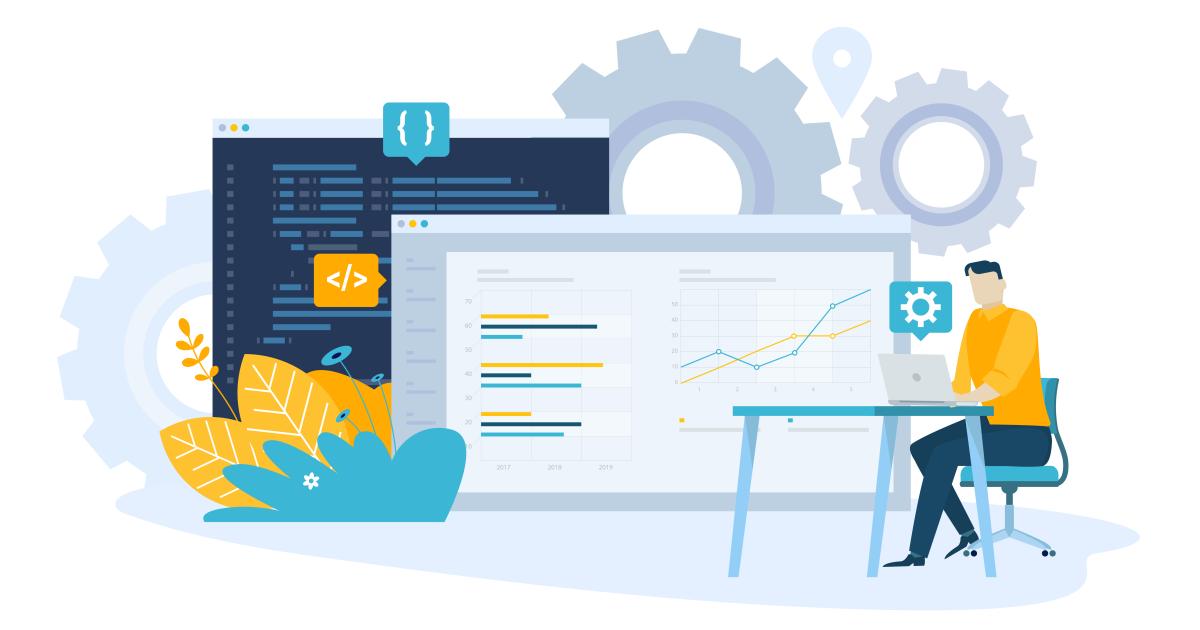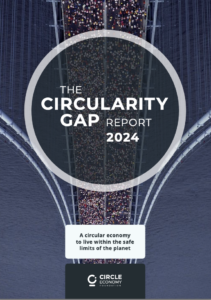
Sustainability reporting has evolved rapidly as companies are forced to shift from voluntary disclosure to accurately responding to coming regulatory requirements for auditable ESG data. Say goodbye to spreadsheets and hello IT. The ESG reporting software market was worth more than $905 million in 2021 and will grow to more than $4.34 billion by 2027, according to research firm Verdantix. It also found that global market spend on carbon management software surpassed $340 million in 2021, and is growing at a 28 percent compound annual rate, expected to reach $1.4 billion in 2027. That’s a lot of opportunity for a still evolving market.
I wanted to understand what’s happening on the frontlines of this booming market, so I turned to members of the GreenBiz Executive Network, our peer membership forum for sustainability professionals. Close to 100 sustainability execs dished on a wide range of vendors during a virtual meeting last month. As it was held under Chatham House rule — anyone can use information that’s discussed, but not disclose who said what —can’t identify who said what, but can relay first-hand advice for those getting ready to conduct their own evaluation. While needs may vary from company to company, the systems we discussed are used for a variety of functions, including reporting and disclosure (Workiva and Cority), emissions tracking (Persefoni, Watershed) and supply chain activities (EcoVadis, Sedex).
More than one member shared that there is no silver bullet and that if you try to do too much with a single platform you’ll either have so much customization that it will be too complex to manage and maintain over time or you won’t get the depth of functionality you need for things such as supply chain outreach or greenhouse gas accounting.
No single platform can meet all of a company’s sustainability needs and as the regulatory environment becomes more demanding, sustainability teams will be conducting more evaluations. Our network members offer some advice.
Enlist technical support for evaluation and deployment. A complete solution will require integration of multiple products. Successful deployments depend upon a clear architecture developed in partnership with your chief technology officer and chief information officer. It will be important to create a dialogue because what has worked for the CTO and CIO in before may not be the best path forward. For example, in the past energy data may be pulled in based on utility bills from the company’s enterprise software. That can create a lag time that can stretch up to months; companies are starting to get data directly from the utilities via an API.
Do your homework
Due diligence is critical. For some, that means understanding your ability to influence the product roadmap. For others, it’s ensuring the vendor has funding that will support future growth and development. Testimonials are important. Don’t underestimate the importance of getting on the phone to talk with someone using the product today.
Play in the ‘sandbox’
Many of our members shared stories of how software vendors pitched functionality that hadn’t been coded yet. Their advice: Have someone look at the application from a technical perspective and play in a testing environment created with real data to see if you’re getting the kind of granularity that you think you’re going to get. Play with it, check it out, because vendors are adding functionality on the fly.
Meet the customer success team
The support and client success teams are probably more important than the software itself. Good customer support teams can help users understand the software, and how best to deploy it, and in some cases can act as subject matter experts for an internal team providing training.
Minimize customization
Get things as out-of-the-box as possible so that the maintainability and support needed over time is lower. Take a “walk before you run” strategy to reduce the amount of customization. This is a rapidly evolving ecosystem as ESG reporting and data management vendors such as Workiva and Greenstone are creating pre-built integration with carbon management software from Watershed and Persefoni.
Companies are being forced to move away from managing their sustainability data in spreadsheets and must implement more robust software solutions. Both the regulatory requirements and software solutions are moving targets but unlike years past when reporting was voluntary, there’s little flexibility for sitting on the sidelines to see how it all shakes out.
- SEO Powered Content & PR Distribution. Get Amplified Today.
- PlatoData.Network Vertical Generative Ai. Empower Yourself. Access Here.
- PlatoAiStream. Web3 Intelligence. Knowledge Amplified. Access Here.
- PlatoESG. Carbon, CleanTech, Energy, Environment, Solar, Waste Management. Access Here.
- PlatoHealth. Biotech and Clinical Trials Intelligence. Access Here.
- Source: https://www.greenbiz.com/article/evaluating-sustainability-software-heres-5-smart-tips-get-started
- :has
- :is
- :not
- $UP
- 100
- 2021
- 28
- 8
- a
- ability
- About
- According
- Accounting
- accurately
- Act
- activities
- adding
- advice
- All
- also
- amount
- an
- analysis
- and
- annual
- anyone
- api
- Application
- architecture
- ARE
- article
- AS
- At
- away
- based
- BE
- because
- becomes
- been
- before
- being
- BEST
- Billion
- Bills
- both
- business
- business news
- but
- by
- CAN
- carbon
- cases
- chain
- check
- chief
- chief technology officer
- CIO
- clear
- client
- Close
- coded
- coming
- Companies
- company
- Company’s
- complete
- complex
- Compound
- Conduct
- conducting
- create
- created
- Creating
- critical
- CTO
- customer
- Customer Success
- Customer Support
- customization
- data
- data management
- demanding
- deploy
- deployment
- deployments
- depth
- developed
- Development
- dialogue
- diligence
- directly
- Disclose
- disclosure
- discussed
- do
- Dont
- during
- ecosystem
- either
- Emissions
- energy
- ensuring
- Enterprise
- enterprise software
- Environment
- ESG
- Ether (ETH)
- evaluating
- evaluation
- evaluations
- evolved
- evolving
- example
- Execs
- executive
- expected
- experts
- Firm
- Flexibility
- For
- Forum
- Forward
- found
- Free
- from
- functionality
- functions
- funding
- future
- future growth
- GAS
- get
- getting
- Global
- global market
- going
- good
- greenhouse gas
- Grow
- Growing
- Growth
- Happening
- Have
- Held
- help
- House
- How
- HTTPS
- i
- identify
- if
- implement
- importance
- important
- in
- Including
- influence
- information
- integration
- interested
- internal
- IT
- itself
- jpg
- Kind
- Last
- latest
- learning
- little
- Look
- Lot
- lower
- maintain
- manage
- management
- managing
- Market
- Matter
- May..
- means
- Meet
- meeting
- member
- Members
- membership
- million
- Month
- months
- more
- move
- moving
- much
- multiple
- must
- Need
- needed
- needs
- network
- news
- Newsletter
- no
- node
- of
- offer
- Officer
- on
- ONE
- Opportunity
- or
- Others
- our
- out
- outreach
- over
- own
- Partnership
- past
- path
- peer
- percent
- perspective
- phone
- pitched
- platform
- plato
- Plato Data Intelligence
- PlatoData
- Play
- possible
- probably
- Product
- Products
- professionals
- providing
- range
- rapidly
- Rate
- reach
- ready
- real
- reduce
- regulatory
- Relay
- Reporting
- require
- Requirements
- research
- responding
- roadmap
- robust
- Rule
- Run
- Said
- sandbox
- say
- see
- shared
- shift
- Silver
- single
- Sitting
- smart
- So
- Software
- solution
- Solutions
- some
- Someone
- spend
- started
- Starting
- Still
- Stories
- Strategy
- subject
- success
- successful
- such
- supply
- supply chain
- support
- surpassed
- Sustainability
- sustainable
- Systems
- Take
- Talk
- targets
- team
- teams
- Technical
- technical support
- Technology
- Testing
- than
- that
- The
- their
- There.
- things
- think
- this
- those
- time
- tips
- to
- today
- too
- Tracking
- Training
- Trends
- try
- Turned
- under
- understand
- understanding
- unlike
- upon
- use
- used
- users
- using
- utilities
- utility
- variety
- vendor
- vendors
- via
- Virtual
- VIRTUAL MEETING
- voluntary
- walk
- wanted
- was
- we
- weekly
- What
- when
- while
- WHO
- wide
- Wide range
- will
- with
- worked
- worth
- years
- yet
- you
- Your
- zephyrnet











